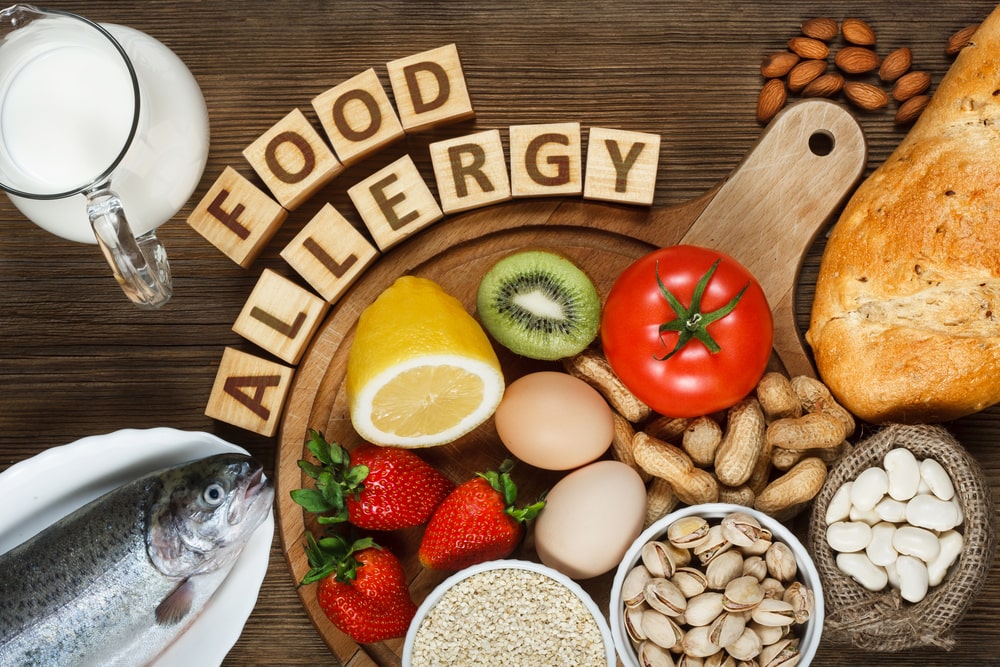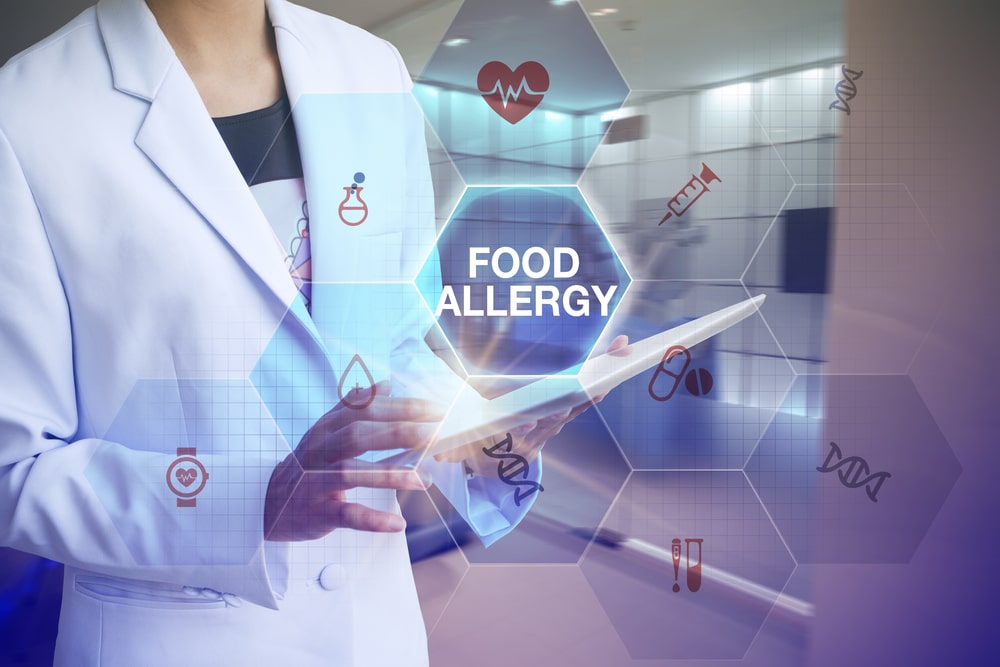7 Common Food Allergy Myths
In a world of diverse cuisines and culinary delights, it’s essential to recognize that for some, the joy of eating can be overshadowed by the presence of food allergies. A food allergy is not just a dietary preference; it’s a serious and potentially life-threatening condition that requires understanding and vigilance.
In this blog, we will learn about common food allergy myths, exploring their causes, and symptoms, and how individuals can effectively manage and navigate life with a food allergy.
What is a Food Allergy?
- What is a Food Allergy?
- 7 Common Food Allergy Myths:
- Myth 1: Food Allergies Are Just a Fad
- Myth 2: Only Children Have Food Allergies
- Myth 3: Food Intolerance and Food Allergy Are the Same
- Myth 4: Allergic Reactions Are Mild and Easily Manageable
- Myth 5: A Little Bit Won’t Hurt
- Myth 6: Only Peanuts and Shellfish Cause Severe Allergic Reactions
- Myth 7: Cooking Eliminates Allergens
- Managing Food Allergies:
- EndNote:
- FAQs:
- References:
- Read Also:

A food allergy is an abnormal immune response to a specific component in a particular food. The immune system mistakenly identifies certain proteins in food as harmful invaders and reacts by releasing chemicals like histamine. This immune response can lead to a range of symptoms, from mild to severe, affecting various organ systems in the body.
Common Food Allergens:
- Peanuts and Tree Nuts: Peanuts, almonds, walnuts, and other tree nuts are common allergens.
- Milk: Allergic reactions to milk can occur due to proteins like casein and whey.
- Eggs: Egg allergies are often triggered by proteins found in the egg whites or yolks.
- Wheat: Wheat allergy can be a reaction to proteins like gluten.
- Soy: Soy allergies involve adverse reactions to proteins found in soybeans.
- Fish and Shellfish: Fish (e.g. salmon, tuna) and shellfish (e.g. shrimp, crab) can cause allergic reactions.
7 Common Food Allergy Myths:

In a world where food is central to our culture, navigating food allergies can be a challenge. Unfortunately, misinformation often surrounds food allergies, leading to misunderstandings and potential risks.
In this blog, we aim to debunk some of the common food allergy myths, shedding light on the facts that can empower individuals, their families, and communities to create safer environments.
Myth 1: Food Allergies Are Just a Fad
Fact: Food allergies are not a passing trend. They are real, immune-mediated reactions to specific proteins in food. The prevalence of food allergies is on the rise, affecting millions worldwide. Dismissing food allergies as a fad can lead to serious consequences for those who live with them.
One prevalent misconception is that food allergies are uncommon. In reality, they affect a significant portion of the population. According to reputable sources, such as the World Allergy Organization, an estimated 220 to 250 million people globally suffer from food allergies. Acknowledging the prevalence of food allergies is the first step in creating a more inclusive and informed society.
Myth 2: Only Children Have Food Allergies
Fact: While food allergies often develop in childhood, they can emerge at any age. Adults can also develop new food allergies, and some individuals may outgrow their allergies over time. Food allergies do not discriminate based on age.
In fact, adults can develop new food allergies later in life, challenging the notion that it’s something one “outgrows.” It’s crucial for adults to remain vigilant and seek medical attention if they suspect a new food allergy.
Myth 3: Food Intolerance and Food Allergy Are the Same
Fact: Food intolerance and food allergy are distinct conditions. Food intolerance involves difficulty digesting a particular food, resulting in symptoms like bloating or upset stomach. Food allergies, on the other hand, are immune responses that can lead to severe reactions, including anaphylaxis.
While both food allergies and food intolerances involve adverse reactions to certain foods, the underlying mechanisms and symptoms differ significantly. Food allergies entail an immune system response, often leading to rapid and potentially severe reactions, while food intolerance is primarily associated with digestive difficulties and non-immune responses. Accurate diagnosis and understanding are essential for effective management and maintaining overall well-being.
Myth 4: Allergic Reactions Are Mild and Easily Manageable
Fact: Allergic reactions can range from mild to severe, and symptoms can escalate rapidly. Anaphylaxis is a life-threatening reaction that requires immediate medical attention. Having an emergency plan and using prescribed epinephrine is crucial in managing severe reactions.
Contrary to popular belief, allergic reactions to food may not always occur immediately after consumption. While some reactions are rapid and occur within minutes, others can be delayed and manifest hours or even days later. This delayed onset can make it challenging to identify the specific allergen responsible for the reaction, emphasizing the importance of professional medical evaluation.
Myth 5: A Little Bit Won’t Hurt
Fact: Even trace amounts of allergens can trigger severe reactions in some individuals. Cross-contact, where a small amount of an allergen unintentionally comes into contact with a safe food, is a significant concern. Strict avoidance is the safest approach for those with food allergies.
Myth 6: Only Peanuts and Shellfish Cause Severe Allergic Reactions
Fact: While peanuts and shellfish are notorious for causing severe allergic reactions, any food can potentially trigger a life-threatening response. Common allergens include milk, eggs, tree nuts, soy, wheat, and fish. It’s essential for individuals with food allergies and those around them to be aware of a wide range of potential allergens to ensure a safe environment.
Myth 7: Cooking Eliminates Allergens
Fact: Some believe that cooking can eliminate allergens and make food safe for someone with allergies. However, cooking may not completely destroy allergenic proteins, and in some cases, it can even enhance their allergenicity. It’s crucial to recognize that thorough avoidance of allergens is the safest approach for individuals with food allergies.
Managing Food Allergies:

Strict Avoidance: The primary management strategy for food allergies is strict avoidance of the allergen. Reading ingredient labels, asking about food preparation methods, and being aware of hidden allergens are crucial.
Emergency Action Plan: Individuals with severe allergies should have an emergency action plan, including the use of epinephrine (auto-injector) in case of an anaphylactic reaction.
Education and Awareness: Raising awareness among family, friends, and caregivers is vital. Educating those around individuals with food allergies helps create a safer environment.
Regular Medical Check-ups: Regular check-ups with healthcare providers, including allergists, can help monitor and manage food allergies effectively.
Support Groups: Joining support groups or networks can provide emotional support and practical tips for managing food allergies.
Food Allergy Medications: The management of food allergies primarily involves strict avoidance of allergenic food. However, in some cases, medications may be prescribed to help alleviate symptoms or respond to accidental exposure. It’s important to note that there is no medication that can cure food allergies; medications are used to manage symptoms and respond to allergic reactions.
Here are some common medications used in the context of food allergies:
- Epinephrine Auto-Injectors (Epipen, Epipen JR)
- Antihistamines(Cetirizine, Fexofenadine)
- Corticosteroids(Prednisolone, Methylprednisolone)
- H2 Blockers(Famotidine, Cimetidine)
- Leukotriene Inhibitors(Montelukast)
EndNote:
Dispelling common food allergy myths is crucial for promoting understanding, empathy, and ultimately, the safety of individuals affected by food allergies. By fostering accurate information, we can create a more inclusive society that supports those with food allergies and ensures their well-being in various environments, from homes to restaurants and beyond. Stay informed, stay vigilant, and let’s work together to build a world where everyone can enjoy food safely.
FAQs:
How long does a food allergy reaction last?
Food allergic reactions can be fatal and linger for several days. Depending on the nature and degree of the reaction, an allergic reaction might last anywhere between a few minutes and many days.
What is the most common food allergy?
Peanut and milk allergies are the most common food allergies.
How do you know if you have a food allergy?
It can start with itching in the mouth, rashes or hives on the skin, and swellings.
How to cure a food allergy?
It’s important to note that there is no known cure for food allergies. Food allergies are typically managed through strict avoidance of the allergenic food(s) and, in the case of severe reactions, the use of emergency medications like Epinephrine.
What is the difference between a food allergy and a food intolerance?
Real food allergies have an impact on the immune system. A variety of symptoms, some of which may be severe or even life-threatening, can be brought on by even small amounts of the offending food. A food intolerance, on the other hand, typically just affects the digestive tract and results in less severe symptoms. Hence, food intolerance is sometimes confused with common food allergy myths.
References:
- https://www.mayoclinic.org/diseases-conditions/food-allergy/symptoms-causes/syc-20355095
- https://www.fda.gov/food/buy-store-serve-safe-food/food-allergies-what-you-need-know
- https://my.clevelandclinic.org/health/diseases/9196-food-allergies
- https://emedicine.medscape.com/article/135959-medication
Read Also:
- https://www.medsengage.com/blog/everything-you-should-know-about-seasonal-allergies/
- https://www.medsengage.com/blog/10-foods-that-help-you-sleep/
- https://www.medsengage.com/blog/foods-that-boost-immune-system/
- https://www.medsengage.com/blog/what-foods-can-cause-breast-cancer/
- https://www.medsengage.com/blog/what-foods-cause-high-cholesterol/
- https://www.medsengage.com/blog/what-foods-to-avoid-while-on-eliquis/

